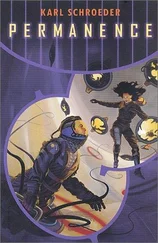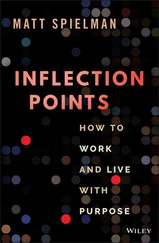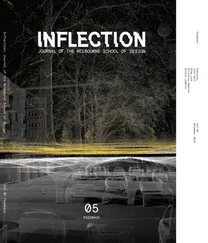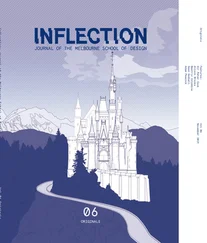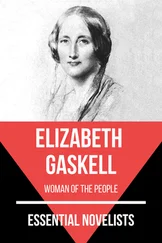Tanja Beer
Dr. Tanja Beer is an award-winning ecoscenographer and an Academic Fellow in Performance Design and Sustainability at the Melbourne School of Design. She has more than 15 years professional experience, including creating ephemeral designs for projects in Melbourne, Sydney, Brisbane, New York, London, Cardiff, Glasgow, Vienna and Tokyo.
Toby Dean
Toby Dean graduated from the University of Melbourne in 2017 with a Master of Architecture and now teaches in the Bachelor of Environments. He is interested in the intersection of contemporary culture with tradition and in seeking alternative methods of architectural practice and exhibition for the future. He believes in design as a form of empowerment and hopes to continue the discourse on the implications of architecture upon complex environmental and social systems.
Tod Williams and Billie Tsien
Tod Williams and Billie Tsien began working together in 1977 and co-founded their eponymous architectural practice in 1986. Located in Midtown Manhattan, their studio focuses on work for institutions including schools, museums and not-for-profits—organisations and people that value issues of aspiration and meaning, timelessness and beauty.
CONTENTS
Editorial
Barnaby Bennett Breaking and Making Temporality
Christof Mayer Cui Bono? The City as a Product of Societal Negotiation
Aki Ishida Metabolic Impermanence: The Nakagin Capsule Tower
Kaylene Tan Unfinished: Brutalist Heritage in the Making
Casey Mack Future Stock
Dan Hill On Systems
Amelyn Ng Illusions of Freedom
Christine Bjerke Dual-Living: The Digitalisation of Domestic Space
Elizabeth Diller On Obsolescence
Tod Williams and Billie Tsien On Slowness
Eleni Bastéa The Memory of Loss
Tanja Beer * The Aesthetics of Impermanence
Toby Dean The Reassembled Town Hall
Jessica Wood MPavilion: Catalyst or Cat’s Paw?
Sean Anderson On Imagined Placelessness
*denotes articles that have been formally peer-reviewed
EDITORIAL
Dominic On, Jessica Wood, Nina Tory-Henderson and Stephen Yuen
Permanence has long been prescribed as an essential virtue of architecture, associated with the Vitruvian definition of firmitas. mass and solidity crafted to endure. Yet, to think about architectural permanence in the Vitruvian sense today produces a schism: absolutism in a culture of relativism. Speculative development, volatile real estate markets, international warfare, mass migration, a changing climate and throw-away attitudes prioritising quick and temporary fixes for ongoing problems have repositioned the value placed on the material durability of architecture. How do we focus our thoughts and efforts in a culture of obsolescence, when the very essence of architecture—to build—has endurance at the centre of its logic?
This logic frames the architectural project as complete the moment it is built, but a building is an ongoing series of processes; it changes over time through occupation, inhabitation and developing technologies. From the enduringly incomplete Tower of Babel to the temporary urbanism of today, practitioners and theorists have been negotiating and reinterpreting the definition and value of architectural permanence, and it is in this milieu that this edition of Inflection is positioned.
In opposition to the commonplace acceptance of architectural timelessness, this journal presents alternative practices that interrogate the relationships of architecture and design with solidity and time. Through examining a series of temporary architectural interventions in post-quake Christchurch, Barnaby Bennett proposes an ecological understanding of architectural timescales. He argues that buildings should not be understood as inert edifices, but as ‘living’ things that respond to flows, shifts, events and activities as they move through time. In rebuttal to the scrap-and-build culture in Japan, Casey Mack’s study of ‘artificial land’ projects by structural engineer Toshihiko Kimura underscores the importance of cultivating new attitudes toward existing built stock in order to project them into the future, finding a middle ground between permanence and change. Christof Mayer of raumlaborberlin takes post-Wall Berlin as a case study to illustrate how temporary projects can democratise spaces, diversify a city and contribute to long-term urban developments. A thesis project by Toby Dean from the Melbourne School of Design explores the reclamation of public space through more permanent means. Dean proposes the Reassembled Town Hall as a tool with which to resist a culture where the worth of architecture is reduced to economic capital alone. Conversely, in the fields of scenography and performance design, the transience of the event typically takes precedence over the fixity and sustainability of the set and costumes. Tanja Beer’s research considers the social and environmental ripples that resound long after the curtain falls and the set is demolished.
Our contemporary world is one in-flux; new technologies allow business models, governments and social structures to morph with unprecedented speed. How then, does the relatively slow and fixed practice of building position itself in this global condition of temporal, social and technological instability? Amelyn Ng responds to this question through a critique of the rise in freelance and precarious work, made possible by contemporary conditions of globalisation, digitalisation and fluctuating economies. In exploring the spatial implications of our changing work life, she puts forth a sharp commentary on the now ubiquitous hot-desk environment. In a hive of infinite connectivity and productivity, our work life is increasingly held in a state of temporality and placelessness, resulting in a nostalgia for permanence. Christine Bjerke examines the digitalisation of the home and the subsequent effects of destabilisation: breaking down perceived boundaries of domesticity and privacy. Whilst technologies have transformed the social space of the domestic, she posits that the physical space of the home remains largely unaffected, and subsequently questions how the materiality of the home might respond.
An enquiry into architectural permanence is not only an exploration of physical and material endurance, but also of cultural and symbolic persistence. It prompts an investigation into what our architecture says about our collective psychology across time and cultures. Never intended to be permanent, initially considered irreparably ugly and out of character in its romantic surroundings, the Eiffel Tower has since come to define the ‘concept’ of Paris. But of the 18,000 iron members which make up the tower, each has been replaced at least once. The Eiffel Tower as it stands today is a facsimile both of itself and of the culture it has come to represent. So when it comes to architectural heritage, do we seek to preserve the buildings themselves or rather the ideals, souls and epochs by whom they were conceived? As creatures with imperfect memories, perhaps the practice of designing, building and restoring enables us to convert urgent shortterm phenomena into physical recollections thereby cheating our fated collective anterograde amnesia.
Taking Brutalism as a case study, Kaylene Tan uses a movement in a kind of architectural limbo, neither contemporary nor solidified in the past, to question the role of heritage protections. How do we decide what to preserve when our definition of ‘heritage’ changes from person to person, from age to age? Heritage should be considered a verb rather than a noun. If undertaken merely as a formal exercise concerned with hermetic histories and aesthetics, heritage fails to serve modernity. Rather a building’s ‘permanence must be earned rather than merely assumed’ through continual use and appreciation. In a close reading of the current situation surrounding Kisho Kurokawa’s Nakagin Capsule Tower, Aki Ishida delves into the broader cultural and historical beginnings of Metabolism to find answers to the Tower’s preservation conundrum as a building designed to evolve. In The Memory of Loss, Eleni Bastéa poetically explores the symbiotic relationship between buildings and memory. Physical reference points act as a backdrop for the recollection of one’s life, and so these buildings in our memory maintain a legacy and life form after their demolition. Only when physical heritage fails and buildings are wiped away is permanence ultimately achieved. Like our ancestors, buildings are untouchable in death.
Читать дальше

